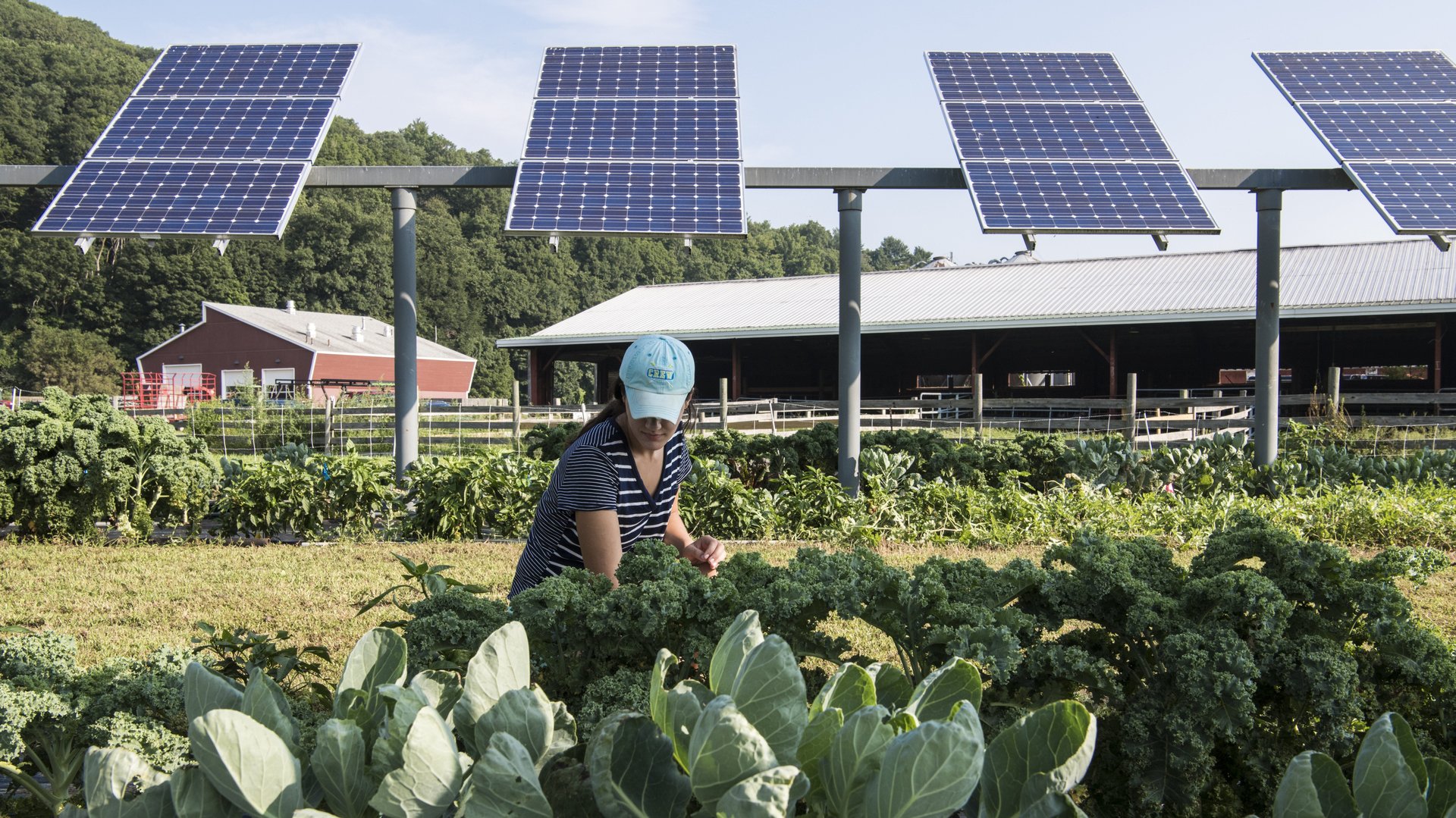Can farmland fix solar power’s real estate problem?
Solar power has a real estate problem.


Solar power has a real estate problem.
Rooftop panels are great, but there just isn’t enough viable rooftop space for solar to take a meaningful bite out of carbon emissions in the US. For that, the country needs utility-scale solar farms, which can take up a lot of space—they could occupy an area the size of Connecticut by 2030, according to the National Renewable Energy Laboratory.
But solar farms are persnickety about where they’re sited. The panels need sunlight, obviously, but their efficiency drops if they get too hot. They like low humidity and a bit of breeze. Builders have to avoid ecologically sensitive habitats and hard or uneven terrain—while staying close to existing electric grid infrastructure. And, not insignificantly, huge arrays of solar panels can be an eyesore.
One siting solution might be retired landfills. But increasingly, researchers, state governments, and solar companies are looking to place their solar farms on… farms.
“Farms convert the sun to food, and solar panels convert the sun to energy, but ultimately it’s the same process, so it makes sense to site them together,” said Chad Higgins, an ecological engineering professor at Oregon State University who has studied solar land use issues.
According to Higgins’ estimates, solar farms could supply the world’s electricity demands if they covered just 1% of global farmland. In a paper published in Nature last August, he found that the efficiency of solar panels is highest on farmland compared to any other possible landscape—a finding that was echoed in another paper the next month from the University of Arizona.
But farmland is a rapidly vanishing commodity. High operating costs, low prices, water scarcity, and other business challenges have put tremendous financial pressure on US farmers, and in recent years many have been forced to sell their land to developers. Between 1992 and 2012, an area nearly the size of Iowa was converted from farmland to urban or industrial development, according to the American Farmland Trust.
In an effort to stem that tide and conserve more land for food production, some states, including Oregon, have strict zoning regulations for farmland that make it difficult or impossible to use it to be covered with solar panels. But that tide appears to be turning.
“Since it’s a newish idea for how to use land, zoning laws remain a big impediment,” Higgins said. “But it’s accelerating toward acceptance a lot faster than I anticipated.”
There needn’t be a trade-off between crops and electrons, Higgins said; they can grow in tandem. Elevated solar panels installed above crops (so-called “agrivoltaics”) can provide an extra income stream for farmers if they lease the space for them to solar companies. And they can yield benefits for the farm itself: The shade can actually boost the yield of vegetables, decrease water consumption, and preserve the ability of soil to absorb CO2 from the atmosphere, according to an ongoing National Renewable Energy Laboratory (NREL) study. The study’s pilot sites have also found ways to combine solar with cattle and goat grazing, as well as apiaries for bees.
A growing number of states are looking to agrivoltaics as a way to meet their clean energy goals while giving farmers an economic boost. Massachusetts, Michigan, Colorado, California, Maine, Illinois, and Virginia have all relaxed zoning requirements for on-farm solar, offered tax rebates, or otherwise cleared the way.
Next in line is New Jersey, which is considering its own bill to ease solar developments on farms. The bill has the support of the state’s main lobbying group for farmers. But it has faced pushback from state electricity regulators, which argue that linking new solar farms to the grid will raise household utility bills. And some conservation groups think the state should exhaust less sensitive sites—the rooftops or parking lots of sprawling Amazon warehouses, for example—before turning to farmland.
Either way, solar developers are already lining up for a spot on Garden State farms. Lucy Bullock-Sieger, director of civic engagement at Boston-based BlueWave Solar, said the company has had success with agrivoltaics in Massachusetts, Maine, and elsewhere, and sees New Jersey as a prime new market. The company especially targets farmers who are unsure if they can afford to keep their land, on the promise that solar can prevent it from turning into a strip mall.
“The farmers we work with are facing the reality of not wanting to sell their farms, but they have a developer knocking on the door,” she said. “There’s an opportunity to leverage [agrivoltaics] so we can do ground-mounted solar without taking any farmland off the table.”